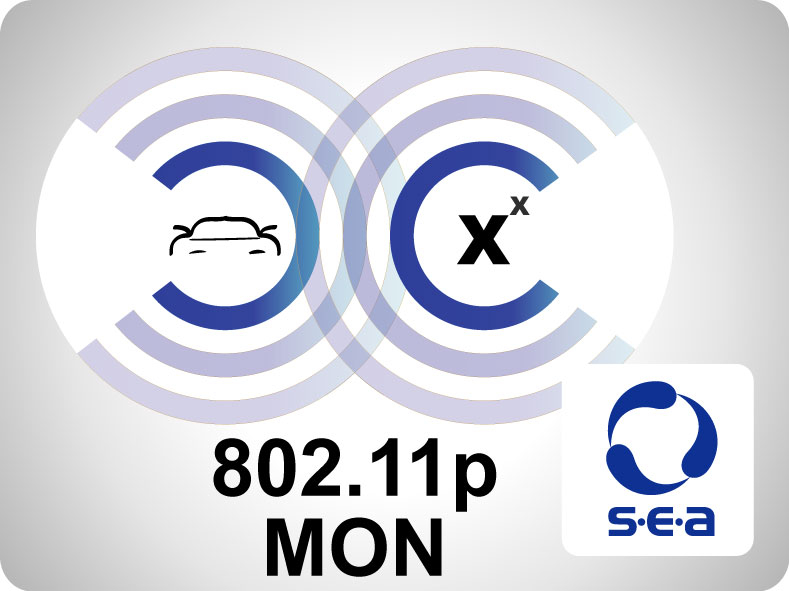Product number: 66000022
Product information "802.11p Add-On for LabVIEW - MONITORING"
- Simulate dense traffic/stress 802.11p communication up to the theoretical limit of 802.11p.
- Catch 802.11p messages for extended monitoring and testing (even invalid frames).
- Inject erroneous messages overriding MAC control and timing (even with corrupt frame content).
- Generate precisely timed 802.11p message streams for 802.11p and V2X validation.
- Get precise timestamps of Rx and Tx activities (coupled to a user-configurable reference clock).
- Synchronize 802.11p message streams to other signals such as CAN, GNSS simulation, and more.
Details
The 802.11p Add-On for LabVIEW - MONITORING delivers unique access to the DSRC 802.11p standard in LabVIEW™ for the future V2X (Vehicle-To-Anything) communications based on NI™ hardware platforms NI USRP and NI PXI (VST). It includes (a) a LabVIEW API (functions palette) incl. examples for programming 802.11p-based applications in LabVIEW and (b) the Host Control Manager (HCM) for interaction with the local communication hardware.
The MONITORING package enables transmission (send + receive) of regular 802.11p packets (MAC + PHY layer) and offers precise timing of the MPDU-packet output as well as precise time information of the received packets. In addition, the package adds features for failure injection by data and timing manipulation (Packet Replay) as well as monitoring of the data traffic using standardized protocol TZSP.
At present following hardware is supported:
The MONITORING package enables transmission (send + receive) of regular 802.11p packets (MAC + PHY layer) and offers precise timing of the MPDU-packet output as well as precise time information of the received packets. In addition, the package adds features for failure injection by data and timing manipulation (Packet Replay) as well as monitoring of the data traffic using standardized protocol TZSP.
At present following hardware is supported:
- NI USRP-2953
- NI USRP-2954
- NI PXIe-5644 (VST)
The package is designed for high-load communication, in-depth stressing and debugging the functionality of 802.11p-capable devices in development, validation and research applications.
For the API LabVIEW 2014 or higher (development version) is required. The HCM requires LabVIEW 2015 Run-Time Engine as well as suitable device drivers (NI USRP or NI VST), version 15.
For the API LabVIEW 2014 or higher (development version) is required. The HCM requires LabVIEW 2015 Run-Time Engine as well as suitable device drivers (NI USRP or NI VST), version 15.





